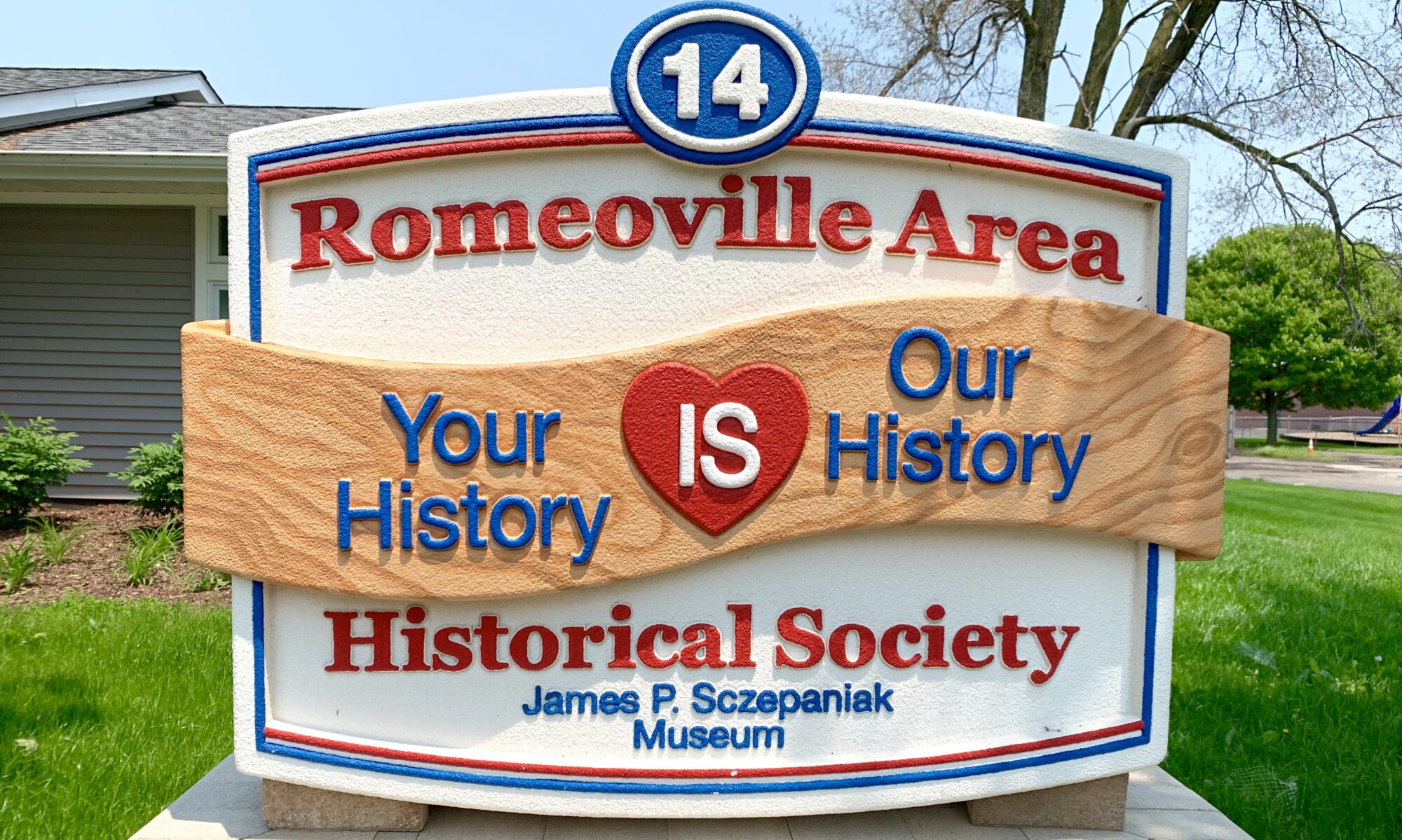Life in early Romeoville had a slower pace than what some young people are used to today! Adults ran farms or businesses that took much of their time. Children had school in addition to chores. Families interacted at churches and also at the Social Hot Spot of the 1920s, Gleaners Hall, as well as at local establishments. In the summer, you could cool off at Romeo Beach or perhaps catch a men’s baseball ball game, such as the DuPage Tigers or Lemont Tigers, or watch the women’s softball team, the Romeo Aces.
Although small schoolhouses served the educational needs of Romeoville’s early population, the building of Hampton Park brought a need for more schools. In 1970, Valley View School District tried each an innovative approach of a year-round school, with each school building hosting students year-round. The area around the school were divided into four groups. Staggered clusters of students would go to school for 45 days, with a break of 15 days. In this manner, schools would be 75 percent full year-round, with students being on different vacation schedules throughout the year. This plan was put into effect from July 1970 to June 1980, and became a model for other school districts.

Hillcrest Park
Hillcrest Park was a Lemont amusement park that entertained area residents for 50 years. Located relatedly secluded off of Joliet Road in Lemont, it operated from 1952 to 2003. It was a full-service outdoor catering facility, specializing in private and corporate outings. In addition to food and outdoor-game areas, Hillcrest Park offered a variety of amusement rides. These rides included a kiddie whip (small carts that spin on the floor), a 4-horse carousel, a helicopter ride, bumper cars, and a steam-locomotive train ride. In 1967, Hillcrest Park acquired the wooden junior roller coaster, the 16-seat Little Dipper. When the venue closed the land was developed into warehouses and the rides were sold.

Old Chicago
Old Chicago, a landmark for both Romeoville and Bolingbrook, was a high-end shopping mall with an indoor amusement park. It was the first indoor amusement park in the world. It opened on June 17, 1975, and included two roller coasters and a Ferris wheel. However, due to high construction costs and competition from Six Flags Great America (1976), it began to fail. The amusement park was closed in March, 1980, and the rides were sold. The mall closed in August, 1981. Old Chicago was torn down in the spring of 1986.

Romeo Beach
Romeoville may have been known as “Stone City”, but one of its quarries gave rise to another of its institutions ó Romeo Beach. Romeo Beach was made from the former Bruce Quarry in 1915. The quarry was allowed to fill with spring water and sand was brought in to make a beach. The new lake was called Clearwater Lake. It was located east of the canal and river and just southwest of 135th Street and New Avenue. Romeo Beach opened in 1916 and was open from Memorial Day through Labor Day. Admission was .10 cents for adults and .05 cents for children. Joseph Startz would meet people at the train to take them to the beach in his surrey. Visitors would buy sandwiches from the Hrpcha farm and purchase butter and sausage before returning home. Local restaurants and hotels also profited from the popularity of Romeo Beach. The beach was closed in 1973 and later sold to Commonwealth Edison.
In the Museum

Rotary-dial telephones became popular in the United States when Western Electric introduced a candlestick model in 1919. Vintage phones of the type shown are sometimes referred to as Bakelite phones for the plastic used in their casings. (Bakelite was used in telephones for its electrical non-conductivity and heat-resistant properties.) Rotary phones “pulse-dialed” phone numbers by using the dial to interrupt the line current, disconnecting it 1 to 10 times, that indicated the desired number. By the 1960s, Touch-Tone buttons started replacing the rotary dial. In 1973, the first hand-held cellular call was made. With the telephone is the 1964 American Telephone and Telegraph Company (AT&T) children’s book, We Learn About the Telephone. The book is geared to school-aged children, explaining the basics of using a telephone along with tips on telephone etiquette.

Old Fashioned telephones came in a wide range of types, woods, colors and designs. Styles included these household telephones from the 20’s and 30’s. Old french styled phones, wooden country wall phones, classic desk models, trim-style and more were commonly used in households. The phones on our museum are all working models.

As families gathered around the television to watch the latest episode of The Adventures of Ozzie & Harriet or Bonanza, they might have decided to enjoy a bowl of popcorn. Popcorn is a type of corn whose kernels explosively expand when heated. It’s kernels contain 14ñ20% moisture. As the moisture is heated to steam, the hull cannot contain the pressure and the starchy kernels explode to about 20 to 50 times the original size. This electric corn popper, donated by Judy and Rich Stukel, used vegetable oil and corn kernels to make the delicious treat. An electrically heated unit warmed the oil inside the pot, initiating the popping process. Later, air-popping and microwave popping would become popular ways to make the snack.

Before the iPod; before the Walkman; there was the Victrola. The phonograph was invented in 1877 by Thomas Edison. Later, in the 1890s, Emile Berliner introduced the modern record by using a flat disc (instead of a phonograph cylinder) that had a spiral groove running from the outside to the center. The record player used a stylus that traced a groove in a record, vibrating, to reproduce a recorded sound. Although technically called the Victor Talking Machine Company’s Victrolas, the machines were soon known as the generic victrola.
